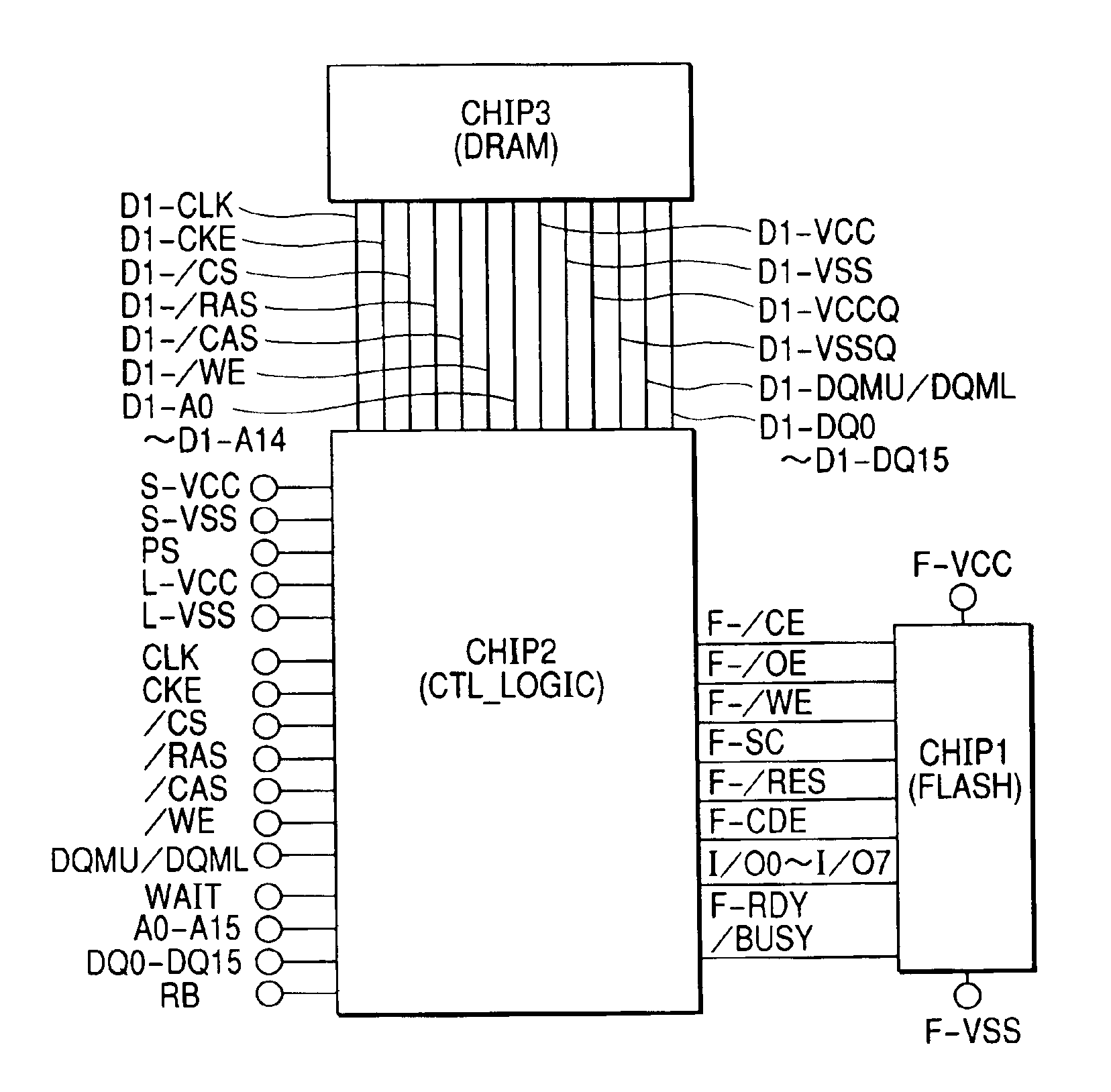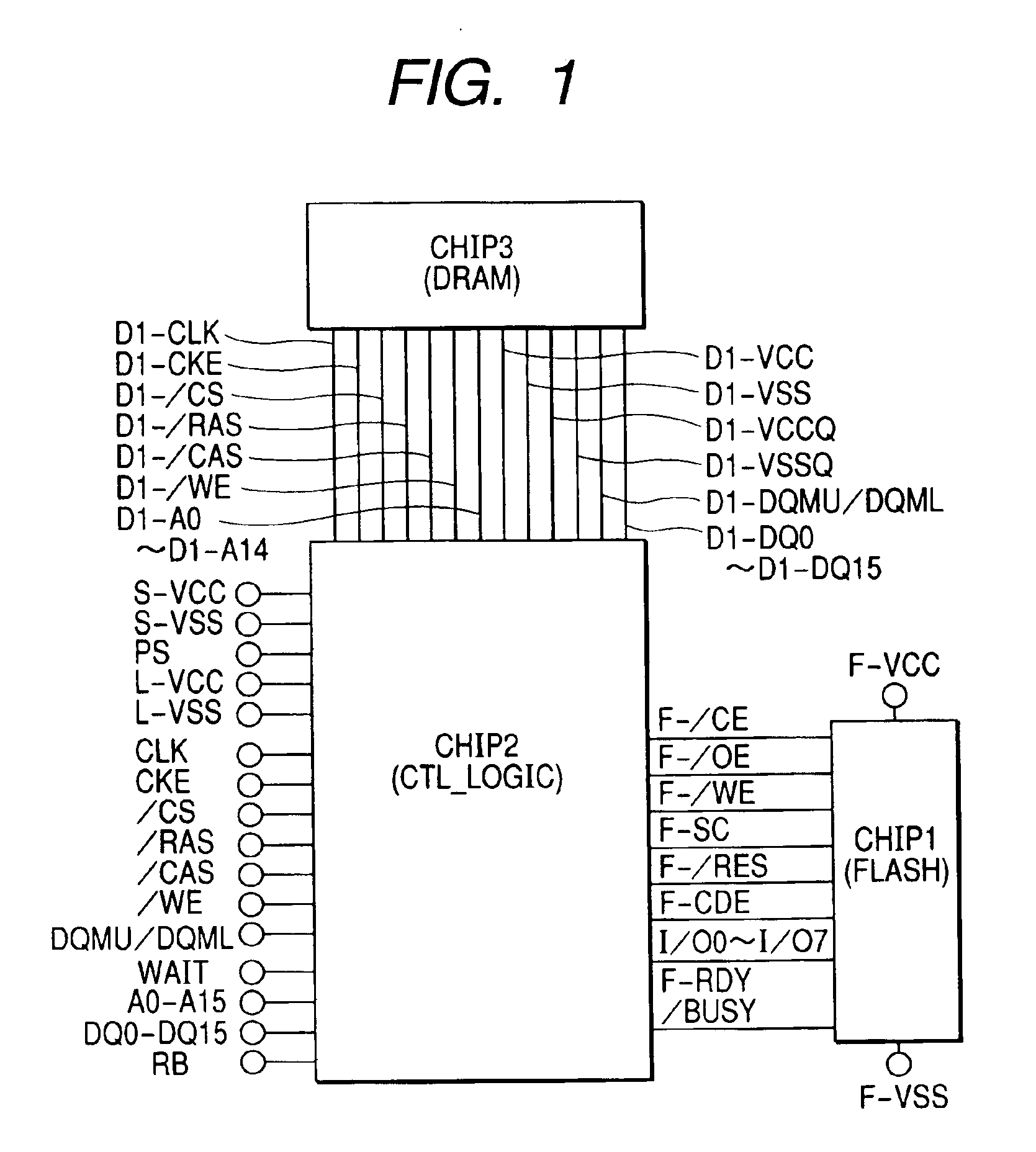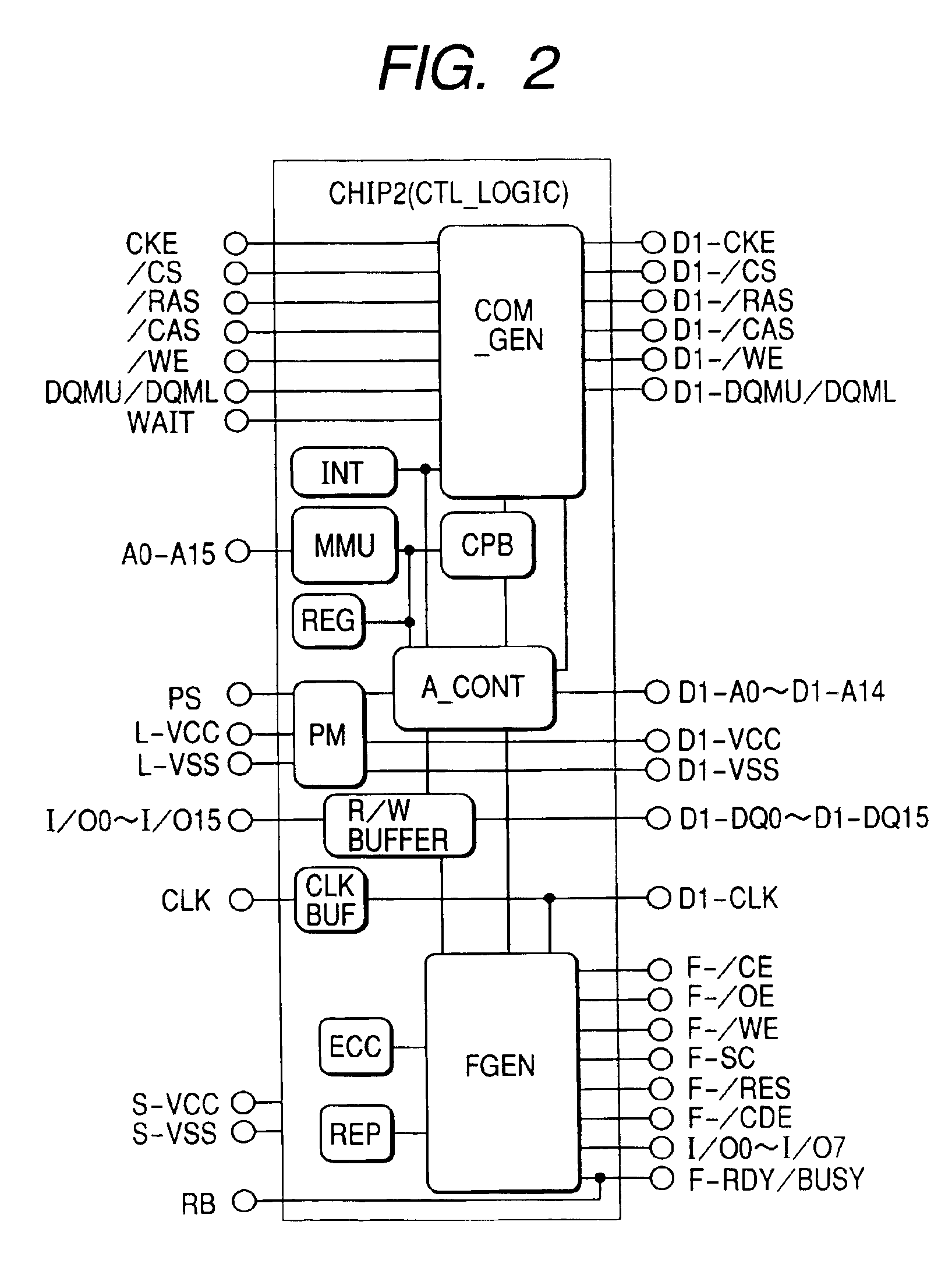Semiconductor device with non-volatile memory and random access memory
a semiconductor device and non-volatile memory technology, applied in the direction of memory adressing/allocation/relocation, digital storage, instruments, etc., can solve the problems of cellular phone functionalities, difficult to give a large capacity to nor flash memory, and require larger capacity memories
- Summary
- Abstract
- Description
- Claims
- Application Information
AI Technical Summary
Benefits of technology
Problems solved by technology
Method used
Image
Examples
first exemplary embodiment
[0065]FIG. 1 shows a first embodiment of a memory module, which is an example of the semiconductor device of the present invention. This memory module is preferably comprised of three chips. Each of those three chips is now described.
[0066]The chip 1 (FLASH) is a non-volatile memory. This non-volatile memory may be a ROM (Read Only Memory), an EEPROM (Electrically Erasable and Programmable ROM), a flash memory, or any similar storage element. A typical example of the non-volatile memory used as chip 1 in this embodiment is a NAND flash memory (to be described below) in the broad sense. The NAND flash memory may have a memory capacity of about 256 Mb and a reading time (time required between a read request and data output) of about 25 μs to 50 μs, which is comparatively slow. On the contrary, the SDRAM used as chip 3 has a large memory capacity of about 256 Mb and a reading time of about 35 ns. Specifically, the reading time of chip 3 is preferably more than 100 times shorter than th...
second exemplary embodiment
[0145]FIG. 21 shows a second exemplary embodiment of the memory module of the present invention. This memory module is comprised of three chips. Hereinafter, each of the three chips will be described in detail. Chip 1 (FLASH) is preferably a non-volatile memory. This non-volatile memory may be a ROM (Read Only Memory), an EEPROM (Electrically Erasable and Programmable ROM), a flash memory, or the like. In this exemplary embodiment, a flash memory is employed. Chip 2 (SRAM+CTL_LOGIC) includes a static random access memory (SRAM) and a control circuit (CTL_LOGIC) that are integrated thereon. The control circuit controls the SRAM integrated on chip 2 as well as chip 3. Chip 3 is a dynamic random access memory (DRAM). The DRAM is classified into various types such as EDO, SDRAM, DDR, etc. according to the differences in the internal configurations and the interface types among them. This memory module may be any of those DRAM types, but the SDRAM is employed in this embodiment as an exa...
third exemplary embodiment
[0225]FIGS. 33A and 33B show a third exemplary embodiment of the memory module of the present invention. FIG. 33A shows a top view and FIG. 33B shows a cross sectional view through line A-A′ of the memory module, respectively. This memory module enables chip 1 (FLASH), chip 2 (CTL_LOGIC), and chip 3 (DRAM) described in the first embodiment or chip 1 (FLASH), chip 2 (SRAM+CTL_LOGIC), and chip 3 (DRAM) described in the second embodiment to be mounted on a substrate (for example, a printed circuit board PCB made of glass epoxy) mounted on an apparatus with use of ball grid arrays (BGA). Although not specifically limited, chip 1 uses a general-purpose DRAM bear chip at one end of which signal and power supply pads are disposed in a line, and chip 3 uses a general-purpose DRAM bear chip in the center of which signal and power supply pads are disposed in a line.
[0226]The bonding pads on chip 1 are connected to the bonding pads on the substrate via bonding wires (PATH2), and the bonding pa...
PUM
 Login to View More
Login to View More Abstract
Description
Claims
Application Information
 Login to View More
Login to View More - R&D
- Intellectual Property
- Life Sciences
- Materials
- Tech Scout
- Unparalleled Data Quality
- Higher Quality Content
- 60% Fewer Hallucinations
Browse by: Latest US Patents, China's latest patents, Technical Efficacy Thesaurus, Application Domain, Technology Topic, Popular Technical Reports.
© 2025 PatSnap. All rights reserved.Legal|Privacy policy|Modern Slavery Act Transparency Statement|Sitemap|About US| Contact US: help@patsnap.com



